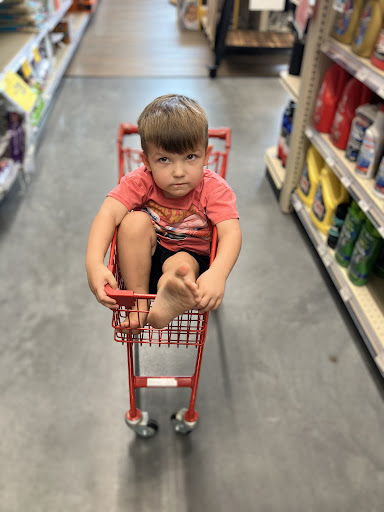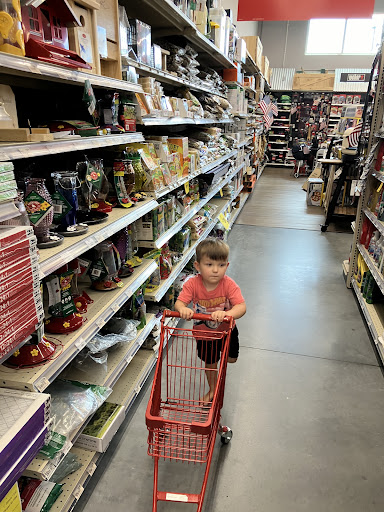Color Matcher: 3 Easy Steps to Perfect Hues
Why Color Matching Matters More Than You Think
A color matcher is a tool that identifies and extracts color information from images or physical samples, converting them into usable color codes or paint formulations. Here’s what you need to know:
- Digital color matchers extract colors from photos and provide HEX, RGB, or CMYK codes
- Physical color matchers (spectrophotometers) analyze real samples to create custom paint formulas
- Common formats include PNG, JPEG, WEBP, and other image types
- Best uses include graphic design, web development, interior design, and DIY projects
Ever wonder how designers and artists find the perfect color combination? They use color theory and matching tools to create harmony in their work.
Whether you’re trying to match that perfect shade of blue from a beach photo or recreate the exact color of your grandmother’s vintage chair, color matching can feel overwhelming. The good news? Modern technology has made it easier than ever to find, match, and work with colors.
Digital tools can analyze any image and give you precise color codes in seconds. Physical matching services at paint stores use advanced equipment to create custom paint from fabric swatches, wood samples, or existing paint chips. Both approaches have their place in your creative toolkit.
The key is understanding when to use each method and how to get the best results. Some projects need the convenience of digital matching, while others require the precision of in-store analysis.
The helpful team at Lowcountry Ace has extensive experience with both digital and physical color matcher tools, helping countless customers achieve perfect color harmony in their homes and projects. We’ve seen how the right approach can transform a frustrating color search into a successful design win.
Understanding the Language of Color: Models and Theory
Think of color as a universal language with several different dialects. Just like you might speak English at home but need Spanish for a vacation, colors have different “languages” depending on where they’re used. Understanding these basics will make your color matcher results much more useful.
Back in 1666, Isaac Newton did something brilliant – he took the color spectrum and bent it into a circle, creating the first color wheel. This wasn’t just a pretty diagram; it was a practical tool that revealed how colors relate to each other. More than 350 years later, designers still use Newton’s color wheel to create beautiful combinations.
Modern color matching relies on several different color models. Each one is like a specialized tool designed for specific jobs. When you use a color matcher, you’ll often get results in multiple formats – and now you’ll know why.
The Core Color Models Explained
RGB (Red, Green, Blue) is the language your digital screens speak. Your phone, computer, and TV create every color by mixing red, green, and blue light. Turn all three up to maximum, and you get bright white light. This is called “additive” color because you’re adding light together.
CMYK (Cyan, Magenta, Yellow, Black) works the opposite way. This is what printers use to put colors on paper. Instead of adding light, ink absorbs it – that’s why it’s called “subtractive” color. Mix all the inks together, and you get black (or close to it).
HEX codes are just a computer-friendly way to write RGB values. That #4A90E2 code you see? It’s shorthand for “74 red, 144 green, 226 blue” in computer speak. Web developers love HEX codes because they’re compact and precise.
HSL (Hue, Saturation, Lightness) and HSV (Hue, Saturation, Value) make more sense to human brains. Instead of thinking about red-green-blue mixtures, you think about the pure color (hue), how vivid it is (saturation), and how bright it appears (lightness or value). These are great for making intuitive color adjustments.
LAB color space is the most comprehensive system, designed to match how human eyes actually see color. Professional color matching services use LAB because it can represent colors that other systems miss. It’s like having a more complete vocabulary for describing colors.
This explains why your color matcher might give you multiple codes for the same color. Each code is optimized for different uses – HEX for websites, RGB for digital screens, CMYK for printing, and so on. You can explore these concepts hands-on with interactive design tools to see how each model works.
How Color Theory Creates Harmony
The color wheel isn’t just educational – it’s your roadmap to creating combinations that actually look good together. There are five main types of color harmonies, each with its own personality and purpose.
Complementary colors sit directly across from each other on the wheel. Red and green, blue and orange – these pairs create high contrast and grab attention. They’re perfect when you want something to pop, but use them carefully or they might feel too intense.
Analogous colors are neighbors on the wheel, like blue flowing into blue-green into green. These create calm, natural-looking combinations that feel soothing and cohesive. Think of a sunset with its oranges, reds, and yellows blending together.
Triadic schemes use three colors evenly spaced around the wheel. They’re vibrant and balanced, offering more variety than analogous schemes while still maintaining harmony. These work great for monochromatic palettes that need a little extra interest.
Color temperature adds another layer to consider. Warm colors (reds, oranges, yellows) make spaces feel cozy and energetic, while cool colors (blues, greens, purples) create a sense of calm and spaciousness. Understanding temperature helps you choose colors that create the right mood for your project.
The helpful team at Lowcountry Ace has seen how understanding these basics transforms customer projects. When you know why certain colors work together, you can make confident choices instead of guessing. For more guidance on applying these principles to your home, check out our Paint Finishes Guide.
The Digital Color Matcher: Your Pocket-Sized Color Expert
Remember when matching colors meant cutting tiny squares from magazines or squinting at paint chips under bad store lights? Today your smartphone does the heavy lifting. A few taps in a free color matcher app can identify exact HEX or RGB codes, suggest palettes, and even export them directly to your design software.
These tools handle almost any image format you throw at them—you can upload a vacation photo, snap a picture of your favorite throw pillow, or import a brand-new logo. In seconds the app isolates dominant hues, lists precise codes, and proposes harmonious matches. It’s professional-grade tech that fits in your pocket, perfect for graphic design, web development, or dreaming up a new room color on the couch.
How a Digital Color Matcher Works
Behind the scenes, image-analysis algorithms sample the pixels you click, read their RGB values, and instantly translate them into the formats you need—HEX for web, CMYK for print, or HSL for quick tweaking. More advanced apps evaluate the entire image, cluster similar colors, and generate palettes based on classic color-theory rules. Curious about next-level features? Explore Match Color with AI.
Common Challenges of Using an Online Color Matcher
- Low-resolution or poorly lit photos give unreliable data.
- Colors shift on uncalibrated screens—what looks perfect on your phone may skew on a laptop.
- Digital light (RGB) never behaves exactly like physical pigment (CMYK).
When you need a result you can actually paint on your walls, our Online Paint Matching Service bridges the gap between screen and can.
From Screen to Wall: The Art of Physical Paint Color Matching
Digital palettes are great for planning, but when you’re standing in front of a wall that needs touch-up paint, nothing beats an in-store spectrophotometer. This handheld scanner measures the wavelengths reflected by your sample and mixes a custom formula in minutes. It sees what a camera can’t: surface sheen, texture, and subtle undertones.
Paint counters can read fabric swatches, pottery shards, cabinet doors—anything flat and at least an inch square. Whether you’re matching historic trim on a Charleston cottage or a souvenir vase from Folly Beach, combining digital ideas with physical matching delivers both inspiration and precision.
For a full walkthrough, see our House Paint Color Matching guide.
Digital Tools vs. In-Store Services
| Digital Color Matchers | In-Store Spectrophotometers |
|---|---|
| Pros: Fast, convenient, great for inspiration | Pros: Highly accurate, matches physical items, expert advice |
| Cons: Screen-dependent, affected by photo quality | Cons: Requires a sample and a store visit |
Tips for a Perfect Paint Match
- Bring a clean, flat sample at least 1 in².
- Test the matched paint under the lighting it will live in—daylight, LED, and lamp light can all shift perception.
- Apply two coats of sample paint on primed wallboard before committing.
- Match sheen as well as hue; flat, eggshell, and gloss reflect light differently.
Need professional mixing? Check our Paint Mixing Service Near Me.
Beyond the Basics: Generating Palettes and Achieving Harmony
Once you’ve nailed a single color, modern color matcher tools can spin that hue into complete, balanced palettes. Upload an inspiring photo, press a button, and out comes a ready-made scheme you can drop into design software or take to the paint counter. It’s like having a color-theory tutor on call.
Creating Palettes from a Single Image
- Choose a sharp, well-lit photo that captures the mood you want.
- Feed it into the matcher; the algorithm extracts 3–5 dominant hues.
- Lock your favorites, regenerate the rest, and export the codes.
Find step-by-step examples in Create color themes with our color tools.
Using AI to Find New Color Combinations
Artificial intelligence scans millions of artworks and interiors to suggest pairings you may never consider—think dusty rose with sage green or charcoal with mustard. Generate dozens of options in minutes, pick the one that sings, then bring it to life with our Magnolia Home Paint collection.
Frequently Asked Questions about Color Matching
Can a color matcher work on any physical item, like fabric or a piece of furniture?
Absolutely! Color matchers are surprisingly versatile and can work with almost any physical item you can think of. The trick is knowing which approach will give you the best results.
For digital apps, you can photograph just about anything – that vintage armchair you love, a piece of fabric from your favorite dress, or even a flower from your garden. The key is taking a high-quality photo in good lighting. Natural daylight works best, but avoid direct sunlight which can wash out colors.
When you need the most accurate results for paint matching, nothing beats bringing the actual item (or a small piece of it) to a paint store with a spectrophotometer. We’ve helped customers match everything from ceramic tiles to leather purses to antique picture frames at Lowcountry Ace.
The main thing to remember is that digital matching gives you inspiration and a starting point, while physical matching gives you precision. If you’re trying to coordinate colors for a mood board, digital tools are perfect. If you need to match your existing kitchen cabinets exactly for touch-up work, bring a cabinet door or drawer front to the store.
Are the small paint samples the same as the regular paint I will buy?
This is one of the most common misconceptions about paint samples. While the color is identical, the formula is quite different. Sample paints are essentially thinned-down versions designed specifically for testing – not for actual painting projects.
Think of paint samples like a movie trailer – they give you a preview of what you’re getting, but they’re not the full experience. Sample paints are thinner, dry faster, and don’t have the same durability additives as regular paint. They’re perfect for seeing how a color looks on your wall, but terrible for trying to paint a whole room.
This is why your sample might look slightly different from your final paint job, especially if you only applied one thin coat. The true color doesn’t show until you’ve applied the proper number of coats with the actual paint formula.
Always buy your final paint in the correct finish and product line for your project. If you tested with a sample of “Ocean Blue” in flat finish, make sure you order “Ocean Blue” in the same paint line, just in your desired finish – whether that’s eggshell, satin, or semi-gloss.
For information about premium paint options available in our area, visit Does Ace Hardware Sell Benjamin Moore Paint?
How can I get the most accurate color match possible?
Getting a perfect color match is part science, part art, and part understanding how colors behave in the real world. The good news is that following a few key principles will dramatically improve your results.
For digital matching, start with the best possible image. Use high-resolution photos taken in bright, neutral, indirect light. That means no photos under yellow incandescent bulbs or blue-tinted LED lights. Natural daylight from a north-facing window is ideal. Also, make sure your screen is calibrated properly – what looks perfect on your phone might look completely different on your laptop.
For physical paint matching, the quality of your sample makes all the difference. Provide a clean, flat, solid-colored sample that’s at least one inch square. The spectrophotometer needs enough surface area to get an accurate reading. Curved surfaces, textured materials, and tiny samples can all throw off the results.
Here’s what the helpful team at Lowcountry Ace has learned from years of color matching experience: Clean your sample thoroughly before bringing it in. You’d be surprised how much dirt, dust, or residue can affect color readings. If possible, bring multiple samples to verify consistency – sometimes paint fades unevenly or items have subtle color variations.
Understand that some colors are simply challenging to match due to special pigments, metallic finishes, or unusual materials. Iridescent surfaces, for example, change color depending on the viewing angle. In these cases, getting “close enough” might be the best possible outcome.
The most important tip? Test your matched color in the actual lighting conditions where it will be used. A color that looks perfect under store lighting might look completely different under your kitchen’s LED fixtures or your living room’s table lamps.
Conclusion
Finding the perfect color doesn’t have to feel like solving a puzzle with missing pieces. Whether you’re scrolling through photos on your phone or standing in a paint store with a fabric swatch, the right color matcher can turn what used to be guesswork into a confident, creative process.
The beauty of modern color matching lies in having options. Digital color matchers are perfect for those moments of inspiration – when you see a gorgeous sunset or a magazine photo that captures exactly the mood you want. They’re fast, convenient, and great for exploring ideas. But when precision matters – like matching existing trim paint or recreating a cherished family heirloom’s exact shade – physical matching services with professional equipment deliver the accuracy you need.
What makes color matching truly powerful is understanding that it’s both art and science. The technology gives you the precision – those exact HEX codes, RGB values, and custom paint formulas. But your eye and creativity bring the vision to life. Color theory principles that have guided artists for centuries still apply, whether you’re working with a smartphone app or a professional spectrophotometer.
The helpful team at Lowcountry Ace has seen how the right approach can transform a frustrating color search into a successful design win. Our Charleston, James Island, and Folly Beach locations combine state-of-the-art color matching equipment with years of experience helping customers achieve their perfect color vision.
Whether you’re a professional designer ensuring brand consistency, a web developer matching colors across platforms, or a homeowner starting a DIY renovation, these tools can save you time and deliver beautiful, cohesive results. The key is knowing when to use digital convenience and when to seek professional precision.
For those tough-to-match physical items or when you need the highest level of accuracy, an in-person consultation can provide the perfect solution. Don’t be afraid to experiment, trust your instincts, and most importantly, have fun with the process. After all, color should bring joy to your space, not stress to your day.
Find professional help with our Paint Matching Service
Lowcountry Ace Hardware: Your one-stop shop for home improvement. We offer quality products from trusted brands and expert advice from our experienced staff. Located on James Island, visit us for tools, hardware, fishing gear, power tools, building materials, grills & smokers, electrical and plumbing supplies, and more.

















